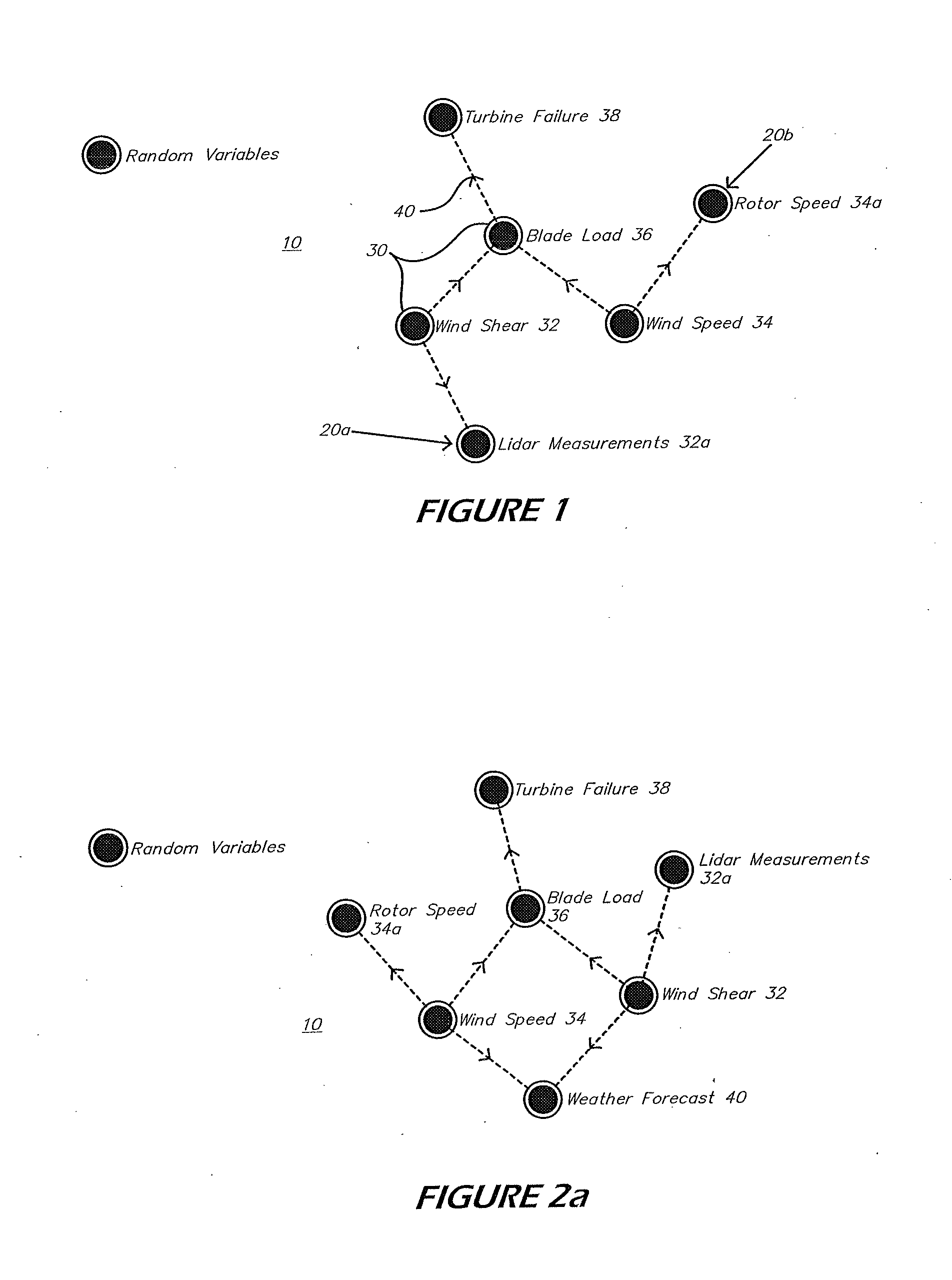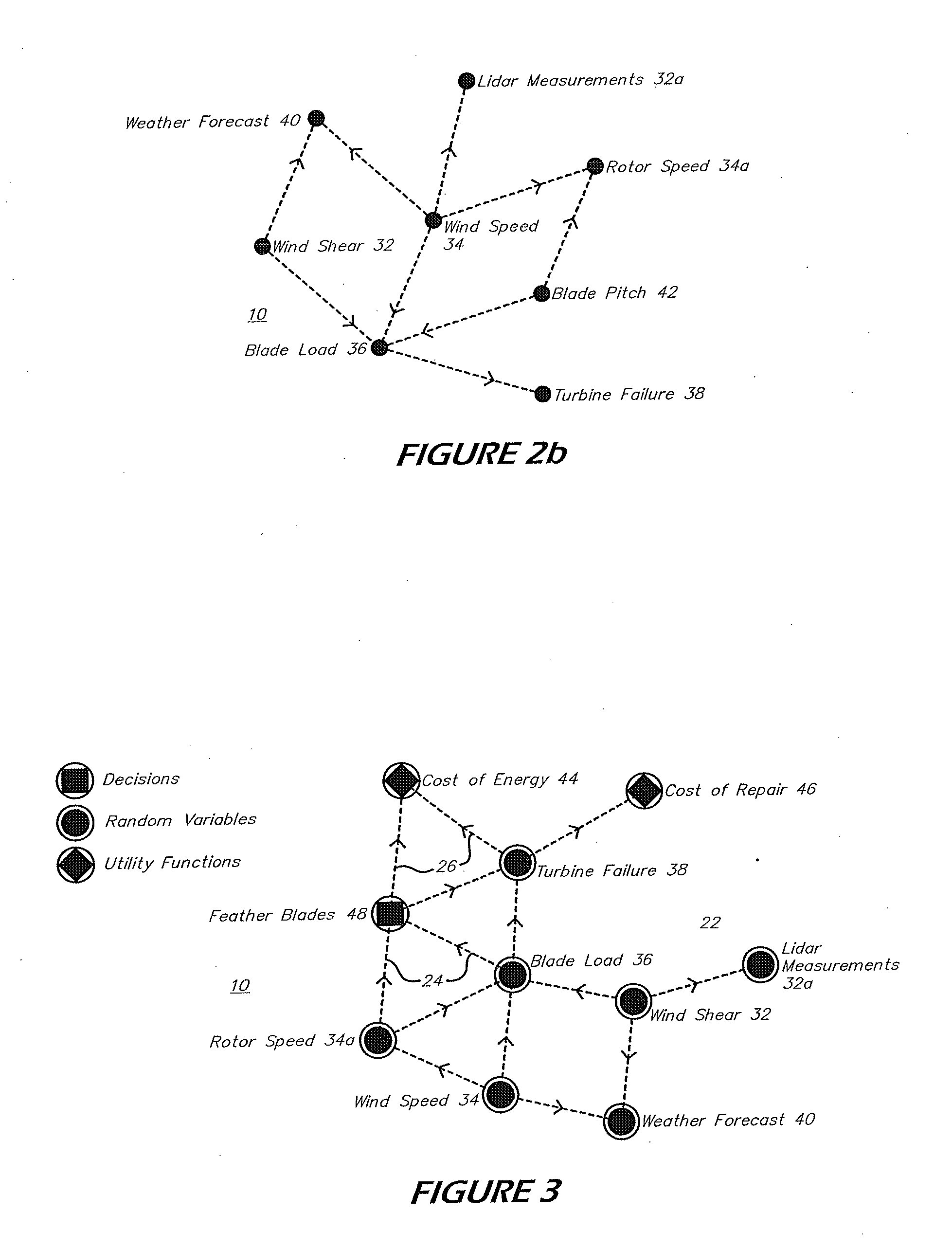Resource optimization using environmental and condition-based monitoring
a technology of condition-based monitoring and resource optimization, applied in adaptive control, reradiation, instruments, etc., can solve the problems of increasing the cost of energy (coe), increasing the cost of maintenance and repair, and increasing the susceptibility to damaging wind conditions. , to achieve the effect of quick simulation
- Summary
- Abstract
- Description
- Claims
- Application Information
AI Technical Summary
Benefits of technology
Problems solved by technology
Method used
Image
Examples
Embodiment Construction
Optimal Reasoning and Decision Making
[0045]For concreteness, we describe the reasoning algorithms in the context of the CM technology of the present invention, but as emphasized in later sections, the reasoning and decision making algorithms are generic and may be used to solve problems in domains beyond that of wind energy.
[0046]At its core, the CM technology of the present invention builds a probabilistic model of the wind energy system, from the level of individual turbine components up to the structure of the atmosphere—at whatever level of resolution is desired, and using whatever data sources are available. This model can then be interrogated to predict, for example, the expected power output of a wind turbine as a function of time, or the likelihood of a given component failing within the next two weeks.
[0047]Because the notions of decision making and utility functions may be directly integrated into CM models according to the present invention, however, w...
PUM
 Login to View More
Login to View More Abstract
Description
Claims
Application Information
 Login to View More
Login to View More - R&D
- Intellectual Property
- Life Sciences
- Materials
- Tech Scout
- Unparalleled Data Quality
- Higher Quality Content
- 60% Fewer Hallucinations
Browse by: Latest US Patents, China's latest patents, Technical Efficacy Thesaurus, Application Domain, Technology Topic, Popular Technical Reports.
© 2025 PatSnap. All rights reserved.Legal|Privacy policy|Modern Slavery Act Transparency Statement|Sitemap|About US| Contact US: help@patsnap.com



